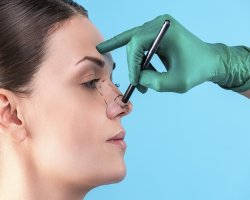What is Bloodborne Pathogens Training & Who Should Take It?

Bloodborne pathogens training is a must for anyone exposed to blood or other potentially infectious materials in their job. This training educates you on recognizing, handling, and protecting yourself from bloodborne pathogens and harmful microorganisms in human blood that can cause diseases like HIV, hepatitis B, and hepatitis C. If you work in healthcare, emergency services, or any role involving first aid or clean up of body fluids, this training is necessary for you.
In this blog, you will learn what BBP training is, what it entails, and who should take it.
What is bloodborne pathogens training?
It is a specialized course that teaches you about infectious agents present in blood and certain body fluids. These pathogens include viruses, bacteria, and other microorganisms that can spread disease if you come into contact with contaminated blood. In the training, you will learn about the types of bloodborne pathogens, how they spread, how to protect yourself, and what to do if exposed. The training typically covers:
Identification of common bloodborne pathogens:
Training introduces you to the main bloodborne pathogens (BBPs), such as HIV, hepatitis B (HBV), and hepatitis C (HCV). These pathogens can cause serious, long-term health issues and are transmissible through contact with infected blood or bodily fluids.
Transmission and exposure risks:
It is important to understand how these pathogens spread. Transmission can occur through cuts, abrasions, or puncture wounds, especially if you handle sharp objects contaminated with infected blood.
Protection methods:
The training teaches you how to protect yourself by wearing gloves, masks, and goggles when handling blood. You’ll also learn the right way to wash your hands and safely throw away sharp items like needles. You will be taught how to use special biohazard bags for contaminated items.
Personal protective equipment (PPE):
You will learn about different types of PPE, when to use them, and how to dispose of them safely after use. Knowing how to handle and dispose of contaminated materials is essential for your safety.
Handling exposures and reporting:
If you are exposed to bloodborne pathogens, immediate action is crucial. The training will cover the procedures for reporting and treating an exposure incident.
Who should take bloodborne pathogens training?
The training is generally recommended or required for anyone who might come into contact with blood or other infectious materials. It is particularly essential for professionals whose exposure risk is high, like:
Healthcare workers:
Doctors, nurses, medical technicians, and paramedics have a high risk of coming into contact with dangerous germs in blood. When they draw blood, handle samples, or treat injuries, they need to know how to stay safe from infection.
Laboratory and research personnel:
Lab technicians, researchers, and other lab staff working in medical research need training for bloodborne pathogens with blood samples or do medical research need bloodborne pathogens training. Labs are high-risk places for contact with harmful germs, so this training teaches them how to handle, label, and safely dispose of samples to protect themselves and others.
Emergency responders:
Firefighters, police officers, and other emergency responders are usually the first to arrive at accident scenes. They may come into contact with blood or other body fluids, which puts them at risk. BBP training helps them understand these risks and teaches them how to use protective gear, stay safe, and avoid infections while doing their jobs.
Custodial and maintenance workers:
Custodians, janitors, and maintenance workers who might clean up after accidents or handle messy materials should take this training. They often come across blood or body fluids in schools, hotels, and public spaces.
Teachers and school staff:
School staff, especially those responsible for student health, often deal with situations where a child might bleed or get hurt. Teachers and staff who give first aid should know about BBPs to help students safely without risking their health.
Tattoo and body piercing artists:
In tattoo and piercing studios, the risk of exposure to bloodborne pathogens is high due to the invasive nature of the work. The artists use needles, inks, and equipment that come into direct contact with clients’ blood. The training is essential in these professions to ensure proper sanitization and disposal practices.
Childcare providers:
Childcare providers may have to respond to children’s injuries or accidents that involve bleeding or bodily fluids. Since children are prone to injuries, childcare staff should understand how to handle blood safely and prevent infection transmission.
Funeral home workers:
Funeral home staff, like embalmers, are at risk because they work with bodies that may carry harmful germs. Training helps them follow safe practices when handling bodies to protect themselves from infection.
Importance of bloodborne pathogens training
The training is not just about fulfilling job requirements; it’s crucial to ensuring personal and workplace safety. Here are the main reasons this training is important:
Protects against serious illness:
HIV, HBV, and HCV are life-threatening infections. Training teaches you the precautions necessary to protect yourself from exposure to these pathogens.
Meets regulatory requirements:
The employees at risk of exposure to bloodborne pathogens should receive proper training. Compliance with these regulations prevents legal consequences for you and your employer and ensures a safer work environment.
Reduces risk of exposure:
The training emphasizes using PPE and following safe practices, significantly reducing exposure risk. Learning the correct procedures for handling potentially infectious materials minimizes the chance of accidental infection.
Ensures preparedness in emergencies:
Accidents happen without warning, and this training prepares you to respond safely and effectively. When you know how to handle blood or bodily fluids safely, you reduce the likelihood of an accidental infection during an emergency.
Conclusion
Bloodborne pathogens training is essential for anyone exposed to blood or fluids on the job. This training teaches you how to protect yourself from germs that can cause serious diseases. People like healthcare workers, emergency responders, and janitors benefit a lot from this knowledge. By learning what bloodborne pathogens are, how they spread, and how to use safety equipment, you lower your risk of getting infected. It helps keep your workplace safe.










